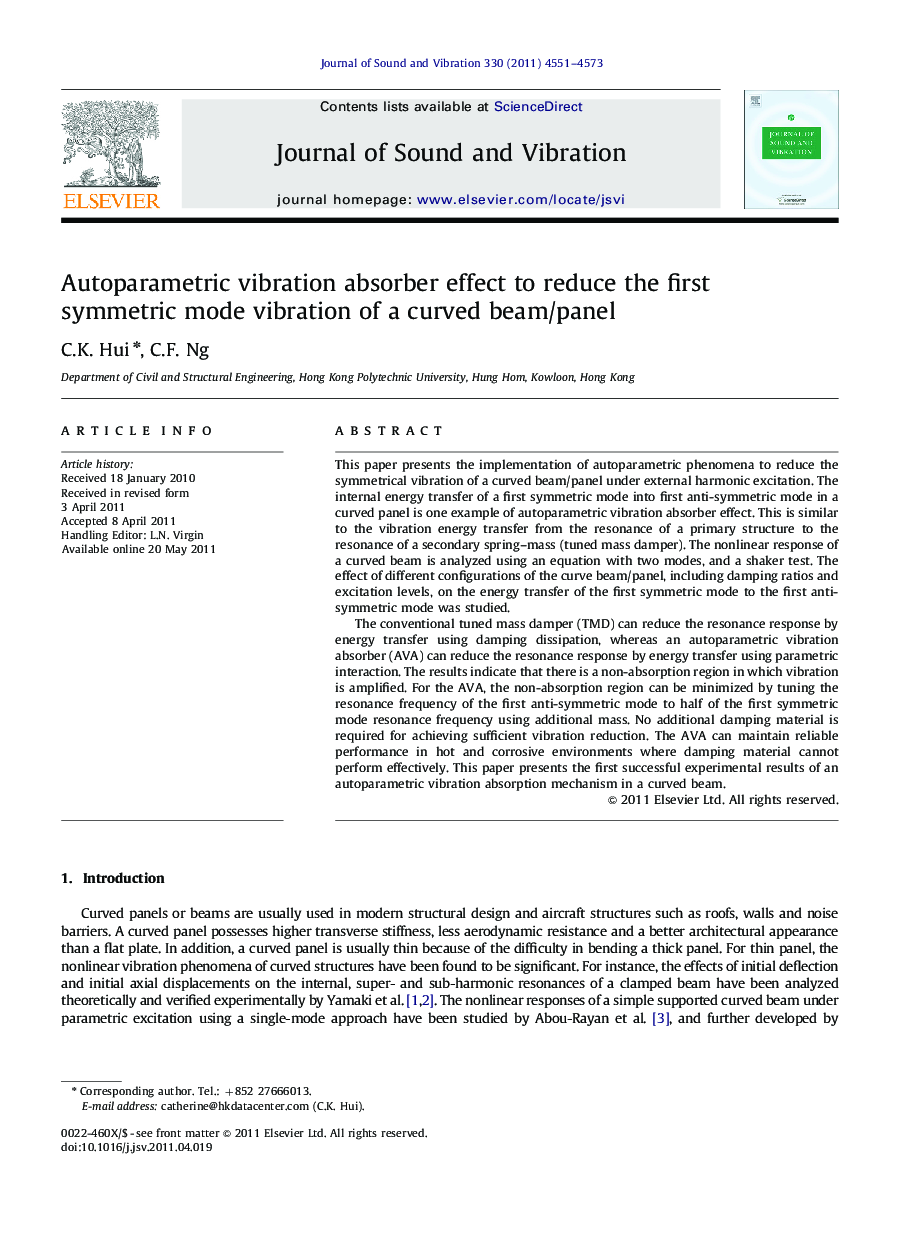| Article ID | Journal | Published Year | Pages | File Type |
|---|---|---|---|---|
| 289518 | Journal of Sound and Vibration | 2011 | 23 Pages |
This paper presents the implementation of autoparametric phenomena to reduce the symmetrical vibration of a curved beam/panel under external harmonic excitation. The internal energy transfer of a first symmetric mode into first anti-symmetric mode in a curved panel is one example of autoparametric vibration absorber effect. This is similar to the vibration energy transfer from the resonance of a primary structure to the resonance of a secondary spring–mass (tuned mass damper). The nonlinear response of a curved beam is analyzed using an equation with two modes, and a shaker test. The effect of different configurations of the curve beam/panel, including damping ratios and excitation levels, on the energy transfer of the first symmetric mode to the first anti-symmetric mode was studied.The conventional tuned mass damper (TMD) can reduce the resonance response by energy transfer using damping dissipation, whereas an autoparametric vibration absorber (AVA) can reduce the resonance response by energy transfer using parametric interaction. The results indicate that there is a non-absorption region in which vibration is amplified. For the AVA, the non-absorption region can be minimized by tuning the resonance frequency of the first anti-symmetric mode to half of the first symmetric mode resonance frequency using additional mass. No additional damping material is required for achieving sufficient vibration reduction. The AVA can maintain reliable performance in hot and corrosive environments where damping material cannot perform effectively. This paper presents the first successful experimental results of an autoparametric vibration absorption mechanism in a curved beam.
